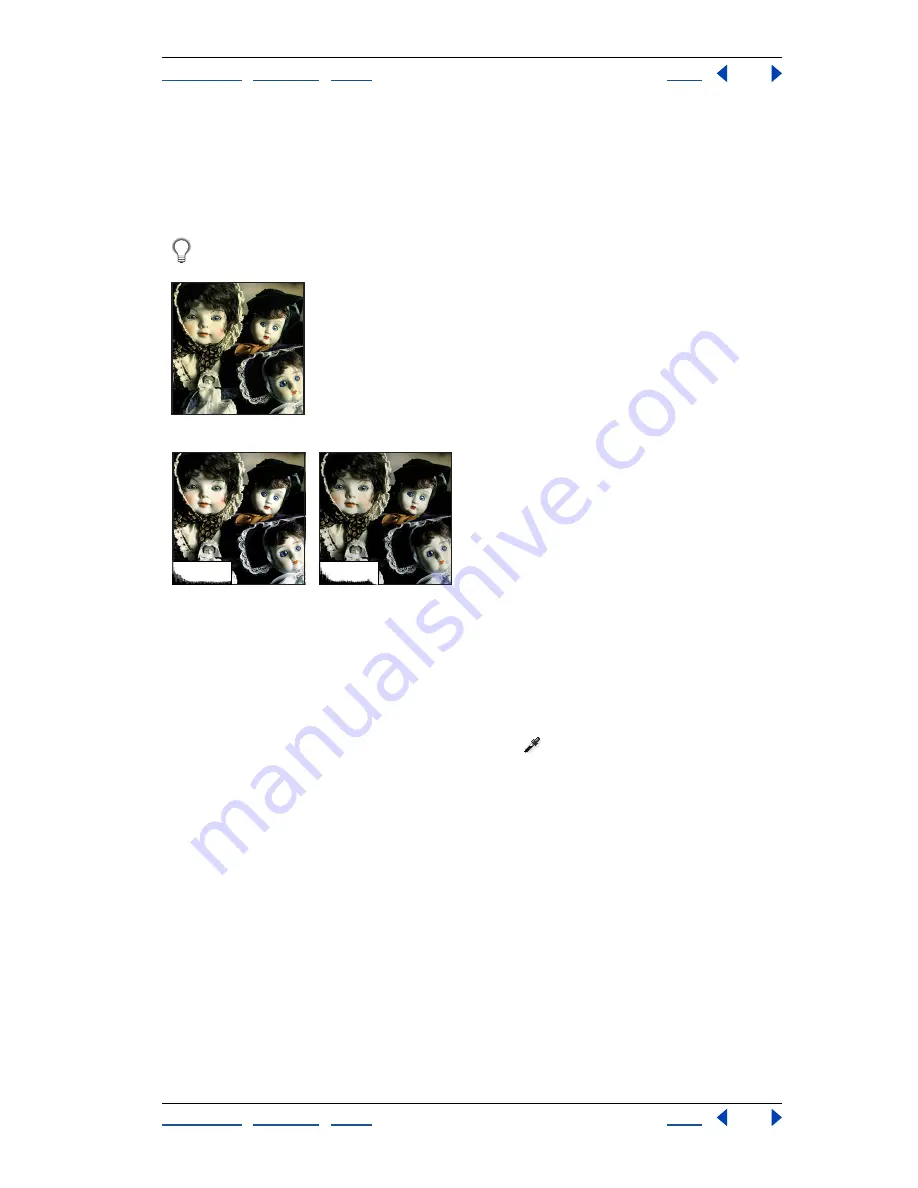
Using Help
|
Contents
|
Index
Back
142
Adobe Photoshop Help
Making Color and Tonal Adjustments
Using Help
|
Contents
|
Index
Back
142
In most situations when you are printing on white paper, you can achieve a good highlight
in an average-key image using CMYK values of 5, 3, 3, and 0, respectively. An approximate
RGB equivalent is 244, 244, 244, and an approximate grayscale equivalent is a 4% dot. You
can approximate these target values quickly by entering 96 in the Brightness (B) text box
under the HSB section of the Color Picker.
With a low-key image, you might want to set the highlight to a lower value to avoid
too much contrast. Experiment with Brightness values between 96 and 80.
Original
Highlight set using average-key target brightness values (B: 96); and highlight set using lower target
brightness values (B: 80)
The pixel values throughout the image are adjusted proportionately to the new highlight
values. Any pixels lighter than the area you clicked become specular white. The Info
palette shows the values both before and after the color adjustment.
5
Do one of the following to assign color values to the darkest area of the image:
•
Double-click the Set Black Point eyedropper tool
in the Levels or Curves dialog box
to display the Color Picker. Enter the values you want to assign to the darkest area in the
image, and click OK. Then click the shadow you identified in step 3.
•
Click Options in the Levels or Curves dialog box. Click the Shadows color swatch to
display the Color Picker. Enter the values you want to assign to the darkest area in the
image, and click OK.
In most situations when you’re printing on white paper, you can achieve a good shadow in
an average-key image using CMYK values of 65, 53, 51, and 95. An approximate RGB equiv-
alent is 10, 10, 10, and an approximate grayscale equivalent is a 96% dot.You can approx-
imate these same values quickly by entering 4 in the Brightness (B) text box under the HSB
section of the Color Picker.






























